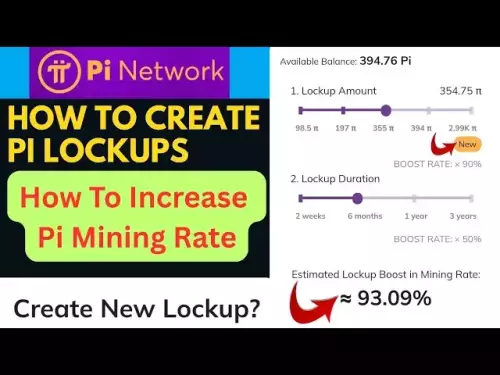 |
|
 |
|
 |
|
 |
|
 |
|
 |
|
 |
|
 |
|
 |
|
 |
|
 |
|
 |
|
 |
|
 |
|
 |
|
Cryptocurrency News Articles
Bitcoin Halving Drives Scarcity and Price Potential Amidst Mining Challenges
Apr 22, 2024 at 03:36 pm
On April 20, 2024, Bitcoin experienced its fourth halving, reducing block rewards for miners by half, potentially impacting profitability and the mining industry. Despite the built-in deflationary mechanism that could drive long-term price appreciation, the relationship between halving events and price is not linear, with market factors playing a role. However, the approval of Bitcoin ETFs and increased investor interest may provide a tailwind, while rising interest rates remain a concern for crypto markets.

Bitcoin Halving: Scarcity Drives Value, but Challenges Arise for Miners and Market Dynamics
April 20, 2024 - The fourth Bitcoin halving occurred on April 20, 2024, at 10:09 AM. This highly anticipated event in the cryptocurrency world marks a 50% reduction in the block reward for Bitcoin miners, potentially impacting the profitability of their operations and the dynamics of the mining industry.
Understanding Bitcoin Halving
Bitcoin's halving mechanism is an inherent feature of its blockchain protocol, designed to control the issuance of new Bitcoins. Every 210,000 blocks (approximately every four years), the block reward for miners is cut in half. This event reduces the rate at which new Bitcoins enter circulation, increasing the asset's scarcity and potentially putting upward pressure on its price over the long term.
Market Impact and Price Fluctuations
While the immediate impact of a halving is primarily felt by miners, it can also trigger market reactions among investors and traders. Historically, Bitcoin's price has shown periods of increased volatility leading up to and following halving events. However, the relationship between halvings and price appreciation is not always straightforward and can be influenced by various market factors.
Increased Scarcity and Potential Price Appreciation
By reducing the supply of new Bitcoins, halving events create artificial scarcity, which can lead to increased demand and upward price pressure. This scarcity premium is driven by the belief that the limited supply will make Bitcoin more valuable in the long run.
Challenges for Bitcoin Miners
For Bitcoin miners, the halving presents significant challenges. The reduction in block rewards directly impacts their profitability, as they receive fewer Bitcoins for their efforts. This can lead to increased competition among miners and a potential exodus of smaller operations from the industry. Larger miners may have the resources to invest in more efficient hardware and energy sources to mitigate the impact, but for smaller miners, the halving can be a significant setback.
Market Dynamics and Short-Term Price Action
Market analyst Megan Stals of trading platform Stake highlights that Bitcoin trading volume typically increases in the 60 days preceding halvings. This is attributed to growing interest and momentum building among investors. However, in the immediate aftermath of the event, price action can be volatile and may not immediately reflect the expected appreciation.
Role of Bitcoin Exchange-Traded Funds (ETFs)
The approval of 11 spot Bitcoin exchange-traded funds (ETFs) by the US Securities and Exchange Commission (SEC) in January has been seen as a potential tailwind for the recent halving event. These ETFs provide investors with an alternative way to gain exposure to Bitcoin without the complexities associated with cryptocurrency exchanges and private keys.
Impact of High Interest Rates
Stals also emphasizes that Bitcoin is sensitive to higher interest rates. The market's concern about inflation and the potential for ongoing rate hikes may temper the immediate price response to the halving.
Conclusion
The fourth Bitcoin halving is a significant event in the cryptocurrency's evolution. It introduces increased scarcity and potentially sets the stage for long-term price appreciation. However, miners face challenges in maintaining profitability, and market dynamics will continue to influence Bitcoin's price behavior. Investors should carefully consider all factors, including the impact of interest rates, before making investment decisions.
Disclaimer:info@kdj.com
The information provided is not trading advice. kdj.com does not assume any responsibility for any investments made based on the information provided in this article. Cryptocurrencies are highly volatile and it is highly recommended that you invest with caution after thorough research!
If you believe that the content used on this website infringes your copyright, please contact us immediately (info@kdj.com) and we will delete it promptly.






























































